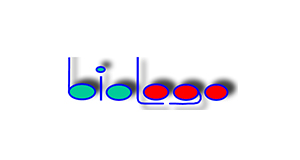Collagen Type VI, human
Collagen Type VI, human
Artikelnummer
BILCO20611-0.1
Verpackungseinheit
0,1 ml
Hersteller
BioLogo
Verfügbarkeit:
wird geladen...
Preis wird geladen...
Background: Collagen type VI is found as 5-10 nm diameter microfibrils (periodicity 100 nm) e.g. in placenta, skin, cartilage and cornea. Collagens consist of a family of highly specialized glycoproteins of which at least 16 genetically distinct types are known to date. The basal unit of a collagen molecule consists of a triple-helical structure formed by 3 alpha-chains. Predominant amino acids are glycine, proline and hydroxproline. Regularly also lysines and hydroxylysines occur, which are responsible for cross-linkage and glycosylation of the protein chains. Different composition of alpha-chains and different glycosylation contribute to the high variability of collagens in different tissues and organs. Human collagen type VI 100%, human collagen type I, II, III, IV and V <0.1%; human elastin and human laminin <0.1%; human fibronectin < 1% (RIA at 1:10.000 dilution).
Positive Control: Human placenta
Immunogen: Purified collagen type VI from human placenta
Purification Method: Affinity purified antibody lyophilized from phosphate buffered solution; no BSA and preservative added!
Concentration: app. 1 mg/ml
References: 1. Ronzière M.C., Ricard-Blum S., Tiollier J., Hartmann D.J., Garrone R., Herbage D. (1990) Comparative analysis of collagens solubilized from human foetal, and normal and osteoarthritic adult articular cartilage, with emphasis on type VI collagen. Biochim Biophys Acta. Apr 19;1038(2):222-30. 2. Silvester LM, Luck MR (1999) Distribution of extracellular matrix components in the developing ruminant corpus luteum: a wound repair hypothesis for luteinization. J Reprod Fertil. May;116(1):187-98.
UniProt: P12109 (CO6A1_HUMAN)
Caution: *These antibodies are intended for in vitro research use only. They must not be used for clinical diagnostics and not for in vivo experiments in humans or animals.
Positive Control: Human placenta
Immunogen: Purified collagen type VI from human placenta
Purification Method: Affinity purified antibody lyophilized from phosphate buffered solution; no BSA and preservative added!
Concentration: app. 1 mg/ml
References: 1. Ronzière M.C., Ricard-Blum S., Tiollier J., Hartmann D.J., Garrone R., Herbage D. (1990) Comparative analysis of collagens solubilized from human foetal, and normal and osteoarthritic adult articular cartilage, with emphasis on type VI collagen. Biochim Biophys Acta. Apr 19;1038(2):222-30. 2. Silvester LM, Luck MR (1999) Distribution of extracellular matrix components in the developing ruminant corpus luteum: a wound repair hypothesis for luteinization. J Reprod Fertil. May;116(1):187-98.
UniProt: P12109 (CO6A1_HUMAN)
Caution: *These antibodies are intended for in vitro research use only. They must not be used for clinical diagnostics and not for in vivo experiments in humans or animals.
| Artikelnummer | BILCO20611-0.1 |
|---|---|
| Hersteller | BioLogo |
| Hersteller Artikelnummer | CO20611-0.1 |
| Verpackungseinheit | 0,1 ml |
| Mengeneinheit | STK |
| Reaktivität | Human |
| Klonalität | Polyclonal |
| Methode | Immunofluorescence, Immunohistochemistry (paraffin), Western Blotting, ELISA, Radioimmunoassay (RIA) |
| Wirt | Rabbit |
| Produktinformation (PDF) | Download |
| MSDS (PDF) |
|

 English
English







